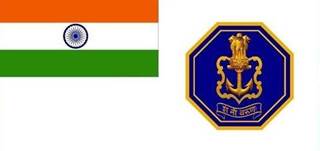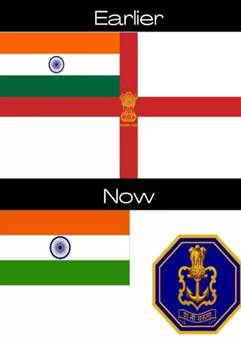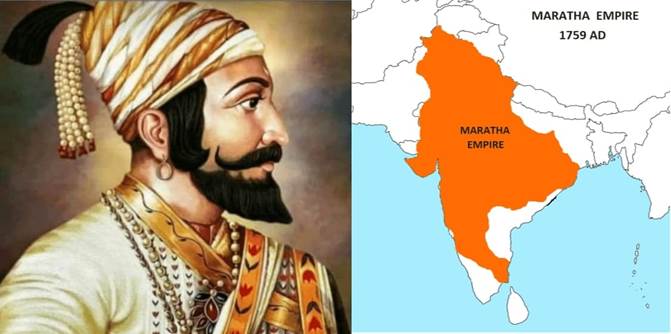Description

Copyright infringement not intended
In News
- The Indian Prime Minister has revealed the new Ensign (Flag) of the Indian Navy at the commissioning of INS Vikrant in Kochi.
- The new naval flag bears the seal of Chhatrapati Shivaji Maharaj.
- The new Ensign has the national flag on the top left corner, and a blue octagon surrounding the National Emblem sitting atop an anchor.
- The octagonal shape represents the eight directions, symbolizing the Navy’s multi-directional reach and operational capability.
- The octagon, with a golden double border, has been inspired by the Raja Mudra; the seal of the Maratha emperor Shivaji.
- The new Naval Ensign has replaced the flag that carried the Saint George’s Cross with the Tricolour in the canton.

Copyright infringement not intended
Marathas
- Maratha Territory includes the modern State of Bombay, Part of Madhya Pradesh, and Part of Hyderabad State.
- The Credit for establishing a Powerful Maratha State goes to Son Shivaji.

Copyright infringement not intended
SHIVAJI
- His father's name was Shahji Bhonsle and his mother was Jija Bai.
- He inherited the Jagir of Poona from his father.
- Shivaji crowned himself at Raigarh and then assumed the title Chatrapathi.
- His administrative System was primarily inspired from the Deccan State.
- He established a centralized system and possessed all executive and legislative power.
- He also introduces the Maratha language as the state language.
- The administration under Shivaji was divided into 8 departments headed by ministers, also known as Ashtapradhan.
- Under Shivaji, the offices were neither hereditary nor permanent and held office at the pleasure of the king.
- The provincial administration was also based on the Deccan state and Mughal system. Shivaji reorganized and in some cases renamed them.
- Cavalry and infantry constituted the primary part of the army. Shivaji maintained a navy as well.
- Shivaji preferred to give cash salaries to regular soldiers.
- Land revenue, Trade Tax etc. was the primary source of the fixed income of Shivaji. But income from these sources was not sufficient to meet the expenditure of the state.
- Therefore Shivaji collected the Chauth and Sardeshmukhi from the territory which was either under his enemies or under his influence.
- The chauth was 1/4 part of the income of the particular territory while the Sardeshmukhi was 1/10.

https://indianexpress.com/article/explained/naval-muscle-and-seal-of-chhatrapati-shivaji-inspiring-indian-navy-8127844/
https://t.me/+hJqMV1O0se03Njk9















